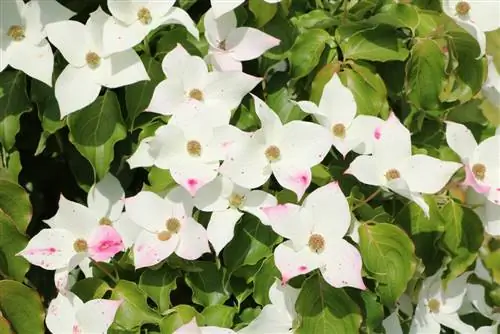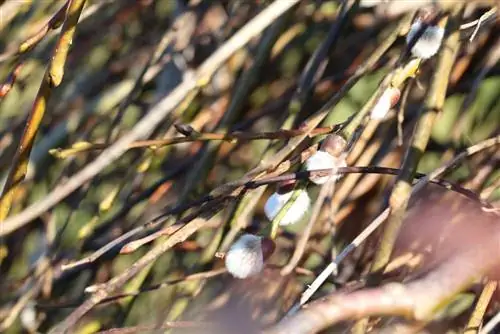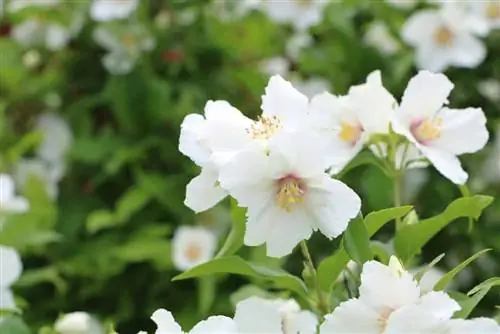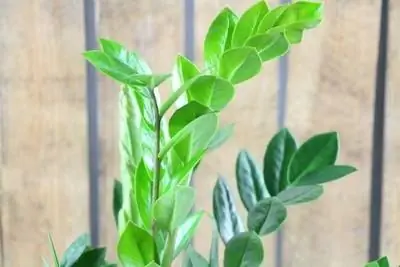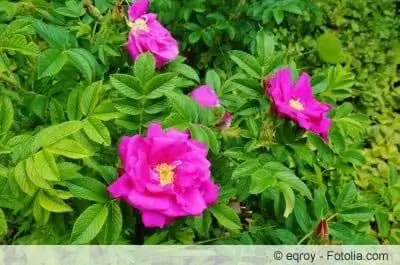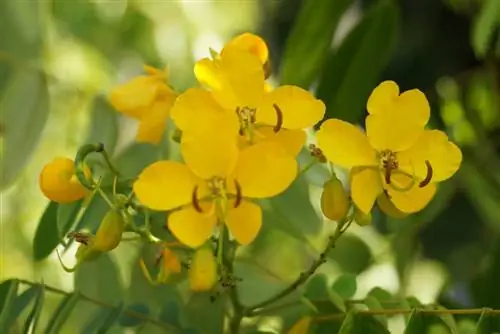- Author admin [email protected].
- Public 2023-12-17 03:39.
- Last modified 2025-01-24 12:45.
The leaves enchant every gardener with their decorative and eye-catching appearance. The dogwood berries are also a delicacy for black redstarts, thrushes, starlings, grosbeaks and robins.
Location and planting substrate for dogwoods
The name dogwood is derived from the extremely hard wood of the plant, which is therefore often used for walking sticks. A sunny or partially shaded spot is sufficient as a location for this undemanding plant. Some species are also happy with shady locations.
- The dogwood places only low demands on its planting substrate.
- However, it must not be extremely moist or even wet, otherwise the roots of the plant will rot.
- If the soil is moist, using drainage can help.
- A well-drained and dry soil is ideal.
However, some varieties require a loamy or clayey substrate that can store a certain amount of moisture. Locations that are located on natural or created bodies of water, for example, are ideal here. Compost or a layer of mulch should also be added.
Planting dogwoods
There are a few aspects that should be taken into account when planting dogwoods. Since dogwood often only shows its first flowers after a few years and from a height of two meters, it is recommended to purchase an older and therefore larger plant.
- Planting is ideally done during spring or in the fall weeks.
- The plant balls are previously soaked in water until there are no more air bubbles.
- The planting distance should be fifty percent of the expected height of the dogwood.
- If a hedge is to be planted, a minimum distance of 100 cm must be maintained between the individual plants.
- Since dogwood forms various root runners, it is predestined for soil compaction and as planting on embankments.
Optimal care, watering and fertilization
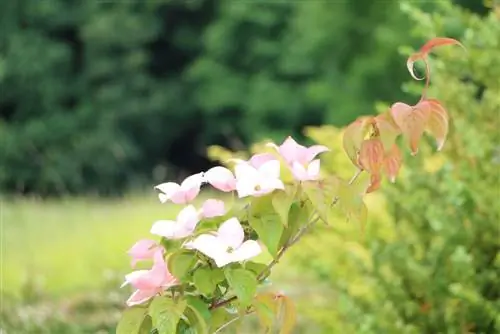
The dogwood proves to be very easy to care for. Since some varieties reach a considerable height as they grow, you should always allow for enough space. Alternatively, the dogwood can be cut back regularly so that it does not grow luxuriantly. A targeted cut can also prevent the colored twigs and branches as well as the leaves from losing their fascinating color over the years.
Many dogwood trees get by with little water. The substrate must not dry out completely shortly after planting, within the first three years. Until the dogwood has grown, it should be watered regularly. Fertilizing the plant is not absolutely necessary. If you want to fertilize, you are well advised to use a slow-release fertilizer. Fertilization is given at the beginning of the growth phase and is completely sufficient.
If possible, the leaves should not be included when watering, as this promotes fungal diseases that spread quickly. As an alternative to fertilizing, the dogwood can be provided with compost in the fall. This significantly improves the growing conditions and fertilizing is unnecessary.
Cut and Taper
The majority of plants are pruned in March, although vigorous pruning will not harm them. It is important that you always cut above the first branches. The dogwood grows bushy and lush when many branches are left. It is particularly important that the dogwood is never cut during frost.
The dogwood, on the other hand, rejuvenates more slowly. In the first pass, approximately 1/3 of the older branches that are growing above the ground are cut off as deeply as possible. It is very important to thin out the inside of the dogwood bush as well. In the second year, the same cut is carried out again, leaving the young shoots of the plant standing. The same procedure is carried out in the third year, so that only the young shoots are retained. The dogwood is now rejuvenated.
Propagate and overwinter
Dogwood can be propagated easily. Either sowing, propagation from cuttings or division is used. Patience is required here. The dogwood grows slowly and shows few shoots. It can take five years until the first flowering occurs.
For propagation using cuttings, a shoot approximately 15 cm long is cut in spring. Existing leaves at the bottom ends are removed. The shoot can now be placed directly into the potting soil. This must be kept evenly moist. Alternatively, shoots with roots can easily be separated from trees and planted in spring. Furthermore, with most varieties the plant can also be divided.
Most types of dogwood are hardy and can even tolerate temperatures down to minus 20 °C. However, there are also varieties that do not fit into this framework, which is why sufficient information must be obtained before purchasing.
Diseases and pests
One of the most feared dogwood diseases is leaf browning. Mildew also often occurs. In most cases the pests are mealybugs. Leaf browning is caused by a fungus, Discula destructiva. The infestation initially appears with brownish spots on the leaves. These necroses only appear at the tips of the foliage. From there they spread further next to the leaf veins to the base of the leaf. The aggressive fungus then spreads to branches and twigs, causing the entire plant to die.
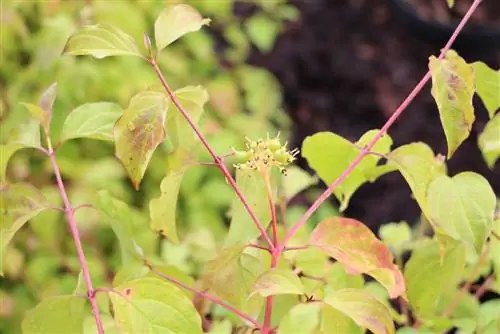
The 'powdery mildew' can be recognized by white-gray spots on both sides of the leaves, which turn into mealy coatings. The fungus can be observed especially in dry, warm weather. This can be remedied by removing the affected shoots and leaves. Furthermore, fertilization should definitely be suspended. A lecithin mix from the garden store that is injected has often proven to be helpful.
Mealybugs can be recognized by the sticky honeydew and groups of woolly animals above the leaves. Yellowing of the leaves occurs and the shoot tips die off completely. The lice colonies can be effectively sprayed with rapeseed oil, which suffocates the mealybugs underneath. Organic gardeners successfully use earwigs and parasitic wasps as alternatives.
What you should know in brief
Each dogwood is individual and is suitable for various outdoor areas. Even in a smaller format it is extremely attractive thanks to its color. The tree is easy to care for if the particular characteristics of the varieties are taken into account. Once the dogwood has grown, it usually takes care of itself
- Dogwood is also called hornbush and its scientific name is Cornus. It belongs to the dogwood family.
- The genus Cornus is divided into a branch with red fruits and one with white or dark blue fruits.
- The dogwood is particularly attractive because of its autumn foliage and shoots.
- However, the shoots lose their color intensity the older they get, so the dogwood should be cut back early enough.
The dogwood family is divided into the following groups:
- Cornelian cherries, which have red fruits, yellow petals and inflorescences without noticeable bracts.
- American dogwoods have red fruits and the flower heads have showy bracts.
- In the Asian flowering dogwood, all the fruits of a flower head are fused and the bracts are conspicuous.
- Another species is the perennial dogwood, which also has red fruits and showy bracts.
- The dogwood (Kaniopsis) has open flower umbels and white or dark blue round fruits.
- The pagoda dogwood has open flower umbels and dark blue round fruits.
The red dogwood, white dogwood, Swedish dogwood and flower dogwood are the most well-known species. Many gardeners enjoy Cornus kosua. It comes from Japan, China and Korea and has red cluster fruits that are reminiscent of strawberries. In many species the flowers are quite inconspicuous. They are usually white, yellowish or greenish and often surrounded by white, yellow or pink bracts. The dogwood forms drupes, which in some species have grown together to form a collective fruit.
- The dogwood is mainly propagated by sowing, which takes place in October.
- The yellow dogwood can also be propagated in spring using cuttings.
- Furthermore, bushes can be divided or propagation can be achieved using lowering plants.
- Green cuttings can also be rooted very well under spray mist.
- The dogwood prefers sun or light partial shade.
- Seeds are naturally spread by birds.
- It is assumed that the development of larger collective fruits is related to dispersal by monkeys.
Tip:
In principle, dogwood is non-toxic, but it can cause diarrhea in children. However, dogwood is said to be very poisonous to guinea pigs and hamsters.
Uses and benefits
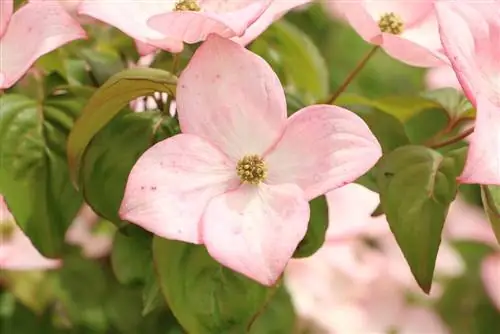
The fruits have a pleasantly sour taste and are preserved with sugar and vinegar. But they can also be eaten unripe like olives. In Turkey, jellies and syrups are made from the fruit of the dogwood, and in Greece, liqueurs are made from the fruit.
The wood of the dogwood is very hard, which makes it particularly suitable for wood turning and carpentry work and as wood for knife handles, instruments, etc.suitable. The famous Ziegenhain sticks are made in Ziegenhain near Jena, which are walking sticks made from this wood.

